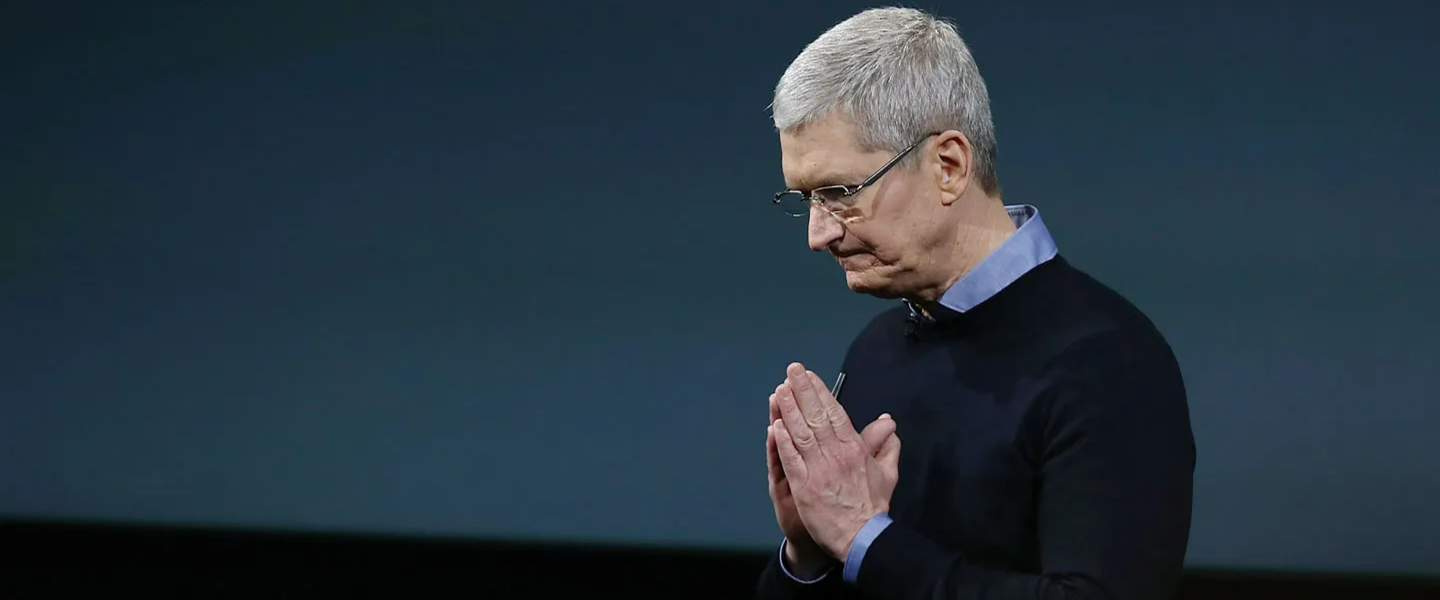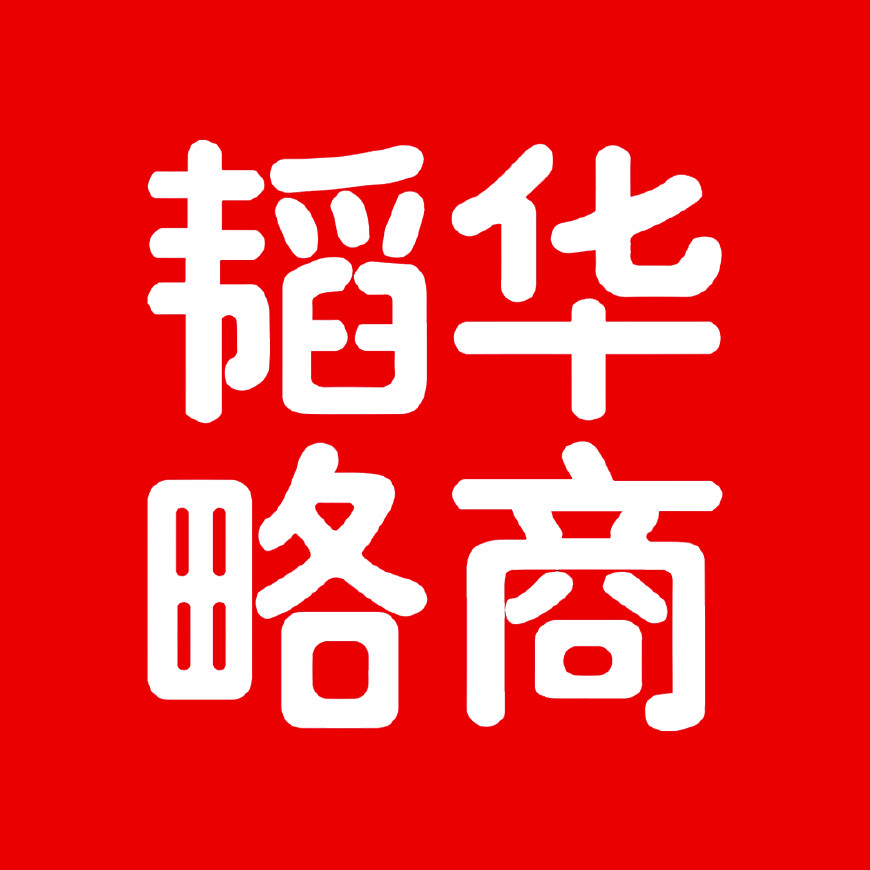iPhone Gets Knocked Out of China’s Ring

Apple is not Nokia, but it could be the “next Samsung.”
01 Apple’s Glory Is Fading
“5, 4, 3, 2, 1!”
On the evening of March 21st, at 7 o’clock, with the countdown from the crowd, the Apple Shanghai Jing’an Store officially opened. Apple CEO Tim Cook, along with employees wearing blue t-shirts, welcomed Chinese customers by opening the glass doors of the new store and embracing them.
The day before the official opening, Tim Cook arrived in Shanghai. He “encountered” actor Zheng Kai on the Bund and had a Shanghai-style breakfast together. Afterwards, he posted on Weibo: “Hello, Shanghai!”
Behind Tim Cook’s trip to Shanghai was the situation of declining iPhone sales and market share in China.
On October 30th, 2009, the iPhone was first released in China. That day, some people waited in the cold wind of Beijing’s early winter since morning, just to buy the “first iPhone in China.”
In the 15th year of the iPhone’s entry into China, Chinese smartphone brands have gone from looking up to catching up and are now competing on the same stage. Apple has truly begun to feel that:
Times have changed.
According to research reports from global industry analysis firms Counterpoint Research and TechInsights, in the first quarter of 2024, iPhone sales in China declined by nearly 20%. In the rankings of manufacturers’ market share in the domestic smartphone market, Chinese brands occupy the top five positions, namely: OPPO, Honor, Huawei, Vivo, and Xiaomi.
Apple is folded into the “others” category on the list, with its name not even appearing.
On May 3rd, Apple released its latest quarterly financial report, further proving the decline of the iPhone. According to the report, Apple achieved revenue of $90.753 billion in the first three months of this year, a 4% year-on-year decrease. Revenue in the Greater China region, its third-largest market, was $16.372 billion, an 8% year-on-year decrease, twice the global average decline rate.
When it comes to the reasons for the decline in iPhone sales, a Chinese consumer said to the media, “Some domestic smartphones perform better in functions such as photography, battery life, and signal reception. I have no reason to choose the iPhone.”
Many Chinese consumers also believe that the iPhone’s technological superiority is no longer obvious, especially when it comes to the update of AI functions, where it lags behind domestic brands.
In early 2024, OPPO released a smartphone with a large language model that can process 7 billion parameters on the device side.
“We introduced AI elimination during the Spring Festival. After taking a photo, you only need to select the unnecessary elements with a simple frame, and the system will automatically remove them from the photo. This feature utilizes the capabilities of generative AI. Users love it, and the backend shows that on average, each user uses this feature 15 times a day.” said Liu Zuohu, Chief Product Officer of OPPO.
“Users may not have a perception of AI as a concept, but as long as you showcase specific functions like AI elimination, the success rate of sales will increase.”
Now, AI elimination has become a standard feature among major domestic smartphone brands.
In addition, Vivo, Huawei, and Xiaomi have developed their own AI applications, such as Vivo’s model-based information extraction, Honor’s eagle-eye-level capture, and Xiaomi’s continuous capture of 150 algorithmic images.
A few days ago, Tim Cook attended the Berkshire Hathaway shareholders’ meeting. When answering questions about the decline in iPhone sales, he said:
China is the most competitive market globally, and he still has great confidence in the future development of the Chinese market.
“While we cannot provide an exact percentage, we’d say the domestic component usage is high, and definitely higher than in the Mate 60,” said Shahram Mokhtari, iFixit’s lead teardown technician.
“This is about self-sufficiency, all of this, everything you see when you open up a smartphone and see whatever are made by Chinese manufacturers, this is all about self-sufficiency,” Mokhtari said.
02 “Samsung Moment”
In 2023, Apple topped the Chinese smartphone market in terms of sales volume with a market share of 17.3%.
If we go back 11 years, in 2012, Samsung dominated the Chinese market with a market share of 17.7% and selling over 30 million phones, enjoying unparalleled success.
However, just five years later, Samsung’s market share in China plummeted to less than 1%, going from dominating the mid-range to low-end market to a complete retreat. Today, Samsung phones have been completely marginalized in China.
Now, faced with the comprehensive rise of domestic Chinese smartphones, people are starting to question whether Samsung’s fate will be similar to that of the iPhone.
In 2002, Samsung began selling phones in China during the era of feature phones when Motorola and Nokia held a 50% market share in China’s market.
Before the official launch, the head of Samsung’s mobile phone business specifically sought advice from the home appliance department regarding market positioning. The feedback received from Samsung’s washing machine factory in Suzhou was:
“In 1998, Samsung washing machines doubled their sales in the low-end home appliance market in China but incurred a loss of 2.1 million US dollars. In 1999, they switched to launching trendy high-end washing machines and sold 170,000 units, achieving profitability.”
Having learned from the home appliance department’s lesson, Samsung realized that the first and second-tier cities in China already had considerable purchasing power. It decisively targeted young white-collar workers aged 22-35, focusing on stylish design and technological advancements. The phone A288, T108, and P408, all became popular hits in China.
On January 9, 2007, Steve Jobs unveiled the first-generation iPhone at the Moscone Center in San Francisco, marking the beginning of the smartphone era. Samsung immediately followed suit with full-touchscreen phones, thus engaging in a competition with Apple.
In 2012, Samsung introduced the Galaxy Note series with large screens, winning accolades such as “Best Phone in the World” and “The Best Android Phone on the Market.” It surpassed Apple and became the sales champion in the Chinese market.
Sitting high on the throne of the Android phone king, Samsung failed to notice that a crisis was looming.
Firstly, Tim Cook took over as the helm of Apple after Steve Jobs and focused on large-screen phones, leading Apple to directly compete with Samsung.
When unveiling the first iPhone, Jobs said, “3.5 inches is the golden size for a phone, a larger screen is just ridiculous.”
After Cook took over, his first decision was to meet the market demands and increase the size of the iPhone to 4.7 inches. With the iPhone 6 and iPhone 6 Plus, Apple entered the era of large screens and launched the iconic slogan:
Bigger than bigger.
Ultimately, the iPhone 6 series, with a global sales volume of 224 million units, propelled Cook to victory and caught Samsung off guard.
Secondly, it was the rise of Chinese smartphone brands.
A landmark event was the emergence of Xiaomi phones in 2011, priced at 1999 yuan. At the launch event, Lei Jun directly targeted the Google Nexus, which Samsung manufactured. In less than three years, Xiaomi’s sales volume exceeded 20 million units.
In 2014, Huawei’s Mate7 made a strong debut, directly competing with Samsung’s Note 4 and changing the perception of domestic smartphones as low-end devices among consumers. Yu Chengdong reminisced, “My proudest moment was the nationwide frenzy for the Mate7.”
Huawei poses a challenge in the high-end market, while Xiaomi intercepts the mid-to-low-end market. In addition, brands like Meizu, Coolpad, and Lenovo are launching attacks, and OPPO and Vivo have emerged as formidable competitors. In 2014 and 2015, Samsung set its lowest records for sales and profits in China.
At this critical juncture, a major incident further accelerated Samsung’s decline.
In August 2016, Samsung experienced a significant incident with the exploding batteries of the Note 7. Subsequently, multiple Note 7 explosion incidents occurred worldwide, leading to bans by airlines in countries such as the United States, Japan, and Singapore on passengers carrying the Samsung Note 7 on flights.
In September, Samsung announced a global recall of 2.5 million Note 7 phones in 10 countries and regions, excluding China. The reason given was that the battery supplier for the Note 7 sold in mainland China was different from those in other countries and had no safety concerns. Therefore, the Chinese version of the Note 7 was still being sold in Beijing.
However, before long, reports of Note 7 explosions by Chinese users emerged, and it wasn’t until October that Samsung announced the suspension of Note 7 production and recalled all Chinese versions as well.
The Note 7 incident eroded the reputation and favorability that Samsung phones had built up in the Chinese market, and the outcome of their retreat was irreversible.
At that time, many media outlets used headlines like “Samsung, the next Nokia” when reporting on Samsung’s decline in the Chinese market.
Today, it is clear that this judgment was wrong. Samsung is not Nokia. With its powerful chips, screens, and self-developed supply chain, Samsung remains the global leader in the mobile phone market and still maintains a certain level of sales in the Chinese market.
03 iPhone of the Era
“5, 4, 3, 2, 1!”
On the evening of October 30, 2009, at 6 p.m., the plaza of Beijing World Trade Center witnessed the official start of the first iPhone sale in China, organized by China Unicom and Apple.
The temperature in Beijing dropped sharply that day, with a biting cold wind. The customized versions of the iPhone available for sale included three models: iPhone 3G 8GB, iPhone 3GS 16GB, and iPhone 3GS 32GB. The retail prices were 4,999 yuan, 5,880 yuan, and 6,999 yuan, respectively.
People had started queuing at the plaza of the World Trade Center since 10 a.m. By around 5 p.m., the number of people in the queue exceeded three hundred. Everyone stomped their feet to keep warm and self-depreciated, “Can you believe that so many people are here in the freezing cold for an ‘old’ phone without WiFi, priced at 4,999 yuan?”
Indeed, the iPhone had such magical appeal to the Chinese people back then.
During the launch event of the first iPhone, Steve Jobs’ statement, “Today, we’re introducing three revolutionary products of this class. The first one is a widescreen iPod with touch controls. The second is a revolutionary mobile phone. And the third is a breakthrough Internet communications device,” drove the world crazy. Even before the official introduction of the iPhone in China, there were already over one million smuggled iPhones being used in the country.
Over the course of 15 years in China, the iPhone has witnessed milestones such as the passing of Steve Jobs, Tim Cook taking the helm, the booming sales of the iPhone 6, surpassing Samsung, the introduction of the full-screen iPhone X, and dominating the Chinese market. It has also witnessed the journey of Chinese smartphone brands from their early stages to becoming formidable competitors.
A few days ago, Reuters commissioned the well-known mobile repair company iFixit to disassemble Huawei’s latest release, Pura70. The teardown revealed that core components, including the flash memory chips, were domestically produced. The chief teardown technician stated:
“While we cannot provide an exact percentage, we’d say the domestic component usage is high, and definitely higher than in the Mate 60. This is about self-sufficiency, all of this, everything you see when you open up a smartphone and see whatever are made by Chinese manufacturers, this is all about self-sufficiency.”
The Greater China region is the third-largest market for the iPhone globally, contributing nearly 20% of its revenue. Cook does not want to lose the Chinese market, and he has never considered the possibility. In a recent earnings conference call, he hinted, “If you step back from the 90-day cycle, what I see is a lot of people moving into the middle class.” He implied that Apple would benefit from the continuous expansion of China’s middle class.
However, Cook’s words may only be partially correct.
If we take a look at our neighboring country, South Korea, the middle-class population has grown along with the economic boom since the 1980s. Over the past decade, the proportion of the middle-class population has remained between 50% and 60%. However, in the South Korean smartphone market, Samsung’s market share reaches 73%. Their new flagship models can achieve millions of sales during the pre-order phase, while the iPhone and others are left behind.
The reasons behind this are not hard to understand. Samsung not only represents South Korea’s technological prowess but also serves as a source of pride for the Korean people. Koreans have a strong preference for domestic products and take pride in them.
Today, this sentiment is also thriving in the Chinese market. Chinese smartphone brands such as Honor, OPPO, Vivo, etc., are cherishing their consumers and constantly proving their worth in the high-end market.
Apple won’t exit the stage, but the new generation of middle-class individuals who have worked hard with Chinese-made smartphones are no longer as enamored with it. Owning an iPhone is no longer a standard for Chinese people entering the middle class, and it will no longer be a source of pride.
The iPhone is a great invention. It was born during the wave of its time but will eventually enter the cycle of time.
However, compared to Samsung, the farewell for the iPhone may be a longer journey.
Editor: Leo Cai
https://www.36kr.com/p/2777339751187331




